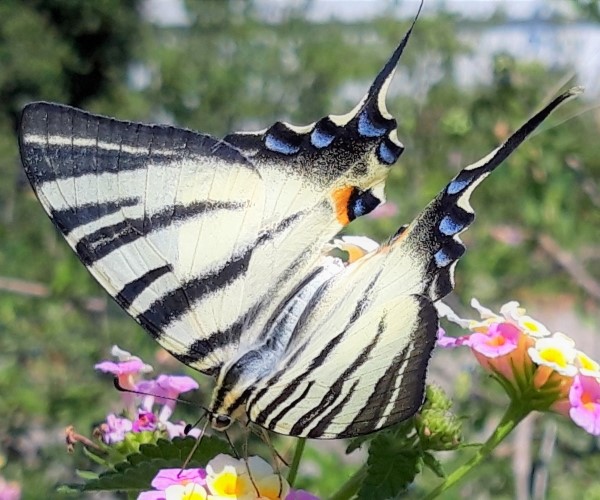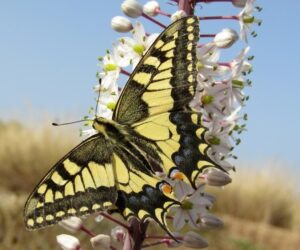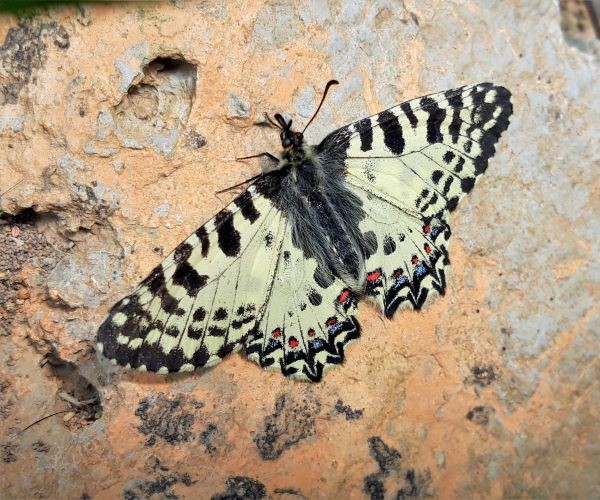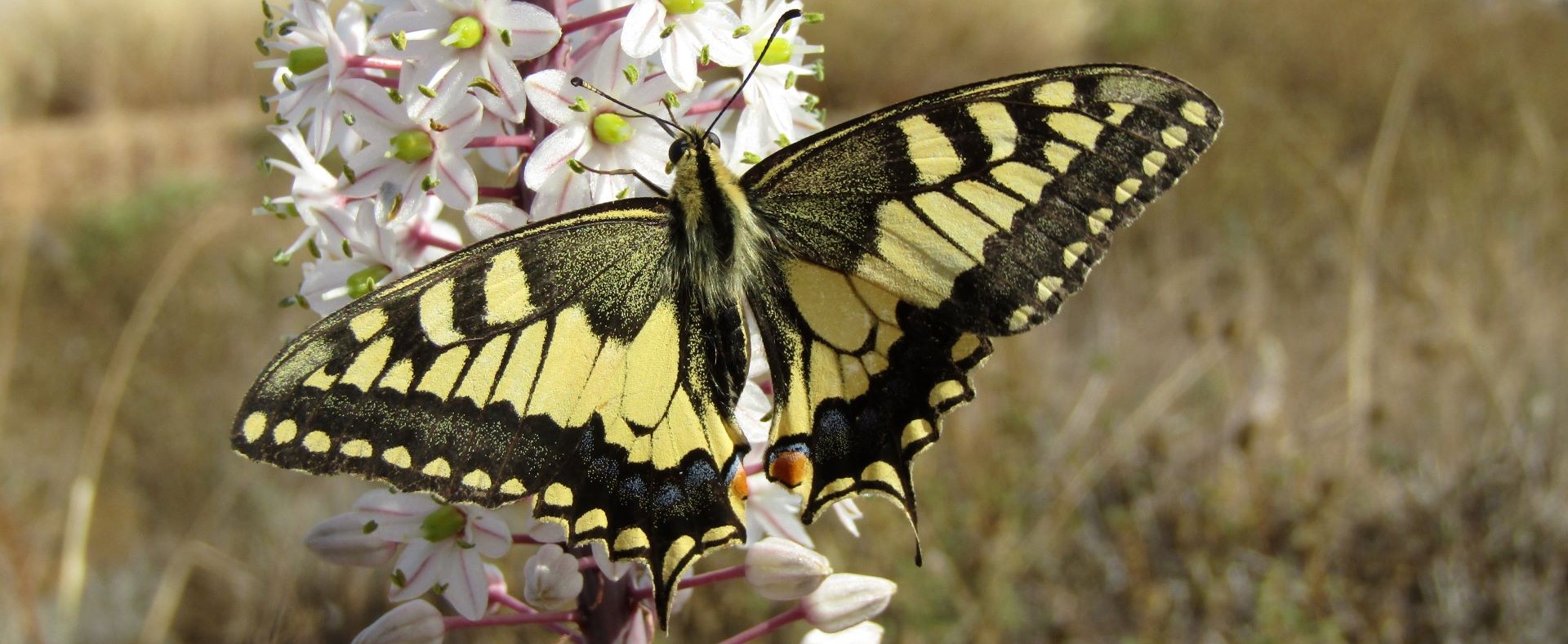
Papilio machaon, Crete - photo © K. Bormpoudaki
The Family Papilionidae (Swallotails)
Description
The family Papilionidae consists of 3 species on the island of Crete, which are large and colorful. One of them is endemic, Zerynthia cretica (Cretan Festoon).
10 species have been observed to fly in Greece. Generally, the family Papilionidae includes more than 550 species distributed worldwide.
Linnaeus applied the names of Greek figures to some swallowtails. For example, Papilio machaon was named after Machaon, and Iphiclides podalirius after Podalirius; both of them were sons of Asclepius, mentioned in Homer’s Iliad and legendary healers.
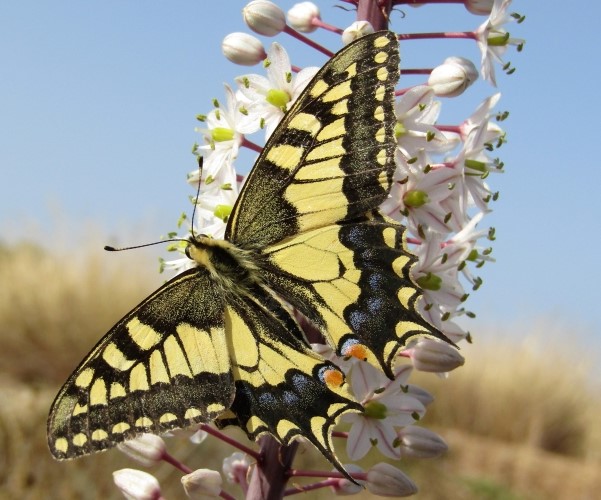
Papilio machaon, Crete – photo © K. Bormpoudaki
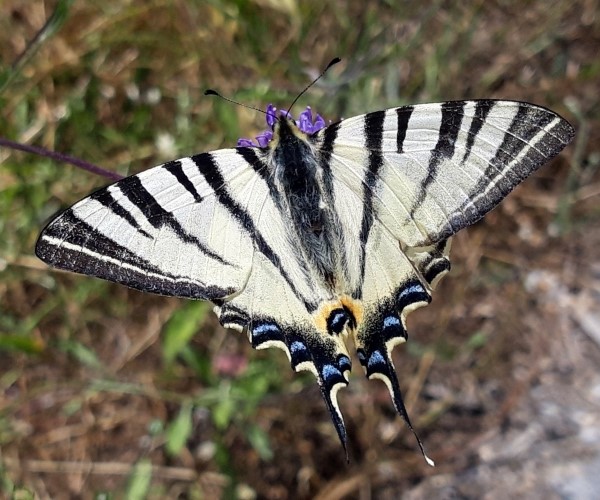
Iphiclides podalirius, Crete – photo © K. Bormpoudaki
Appearance
The name “Swallowtail" refers to a tail-like extension on the edge of the hindwing that is found in many, though not all, papilionids.
All adult swallowtails have three pairs of walking legs, and adults of all species visit flowers for nectar. All legs are fully functional in both sexes, each leg possessing a pair of claws.
The antennae are relatively short for the size of the butterfly, and the club at the end of the antenna is often curved and with a blunt apex.
The species in Crete have an average wingspan of 50-80 mm (2.0–3.2 inches).
Life cycle – Behaviour
The caterpillars of swallowtail butterfly species in Crete feed on a wide range of different plants, most depending on Aristolochiaceae, Umbelliferae (Apiaceae), and Rutaceae.
For example, by eating toxic plants of Aristolochia, the caterpillars sequester aristolochic acid which renders both the caterpillars and the butterflies of some of these toxic, thus protecting them from predators.
Swallowtail caterpillars possess a forked, eversible organ in the prothoracic segment known as an osmeterium. It is a defensive organ found in all papilionid larvae, in all stages, and remains hidden inside the body in an inverted position. If the larva is disturbed in any way, it is turned outward through a transverse dorsal groove being inflating with fluid and a foul, disagreeable odor is emitted which serves to repel predators.
Chrysalis is typically attached to a substrate by the cremaster and with a head upheld by a silk girdle.
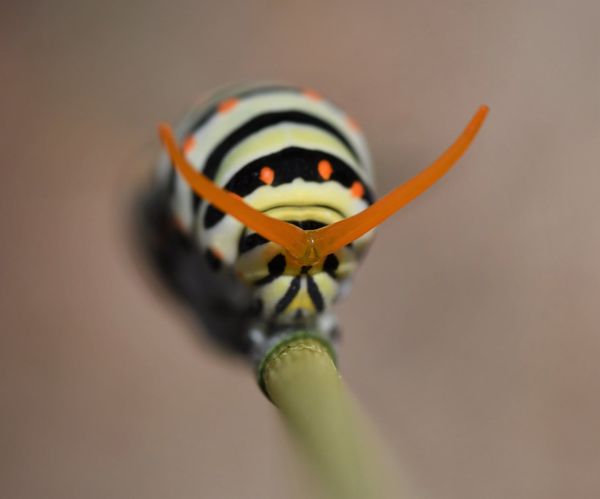
Everted osmeterium – P. machaon larva, Crete – photo © Nikos Marakis
